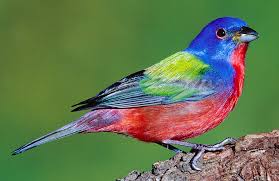by DJ Featherton
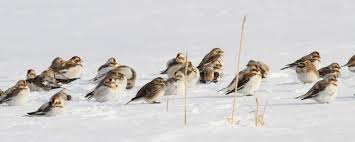
Buntings? Finches? Little brown birds? I don’t know. This can be confusing. So, let’s get acquainted with some favorite North American Buntings. Yes, they look similar to finches, and some look like the unidentified little brown birds, but the Bunting is a breed of his own. Finches are a little smaller and with a finer beak. Buntings are bulkier, have a heavier beak, and spend more time feeding from the ground. These beautiful songbirds have their own migration and breeding areas and can show up at your feeders as a pleasant surprise. Little brown birds, who knows? Let’s identify North America’s favorite Buntings.
SNOW BUNTING:
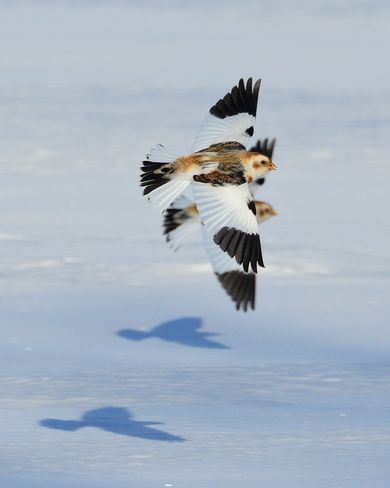
~ Snow Bunting: The Snow Bunting is a beautifully colored white bird with a black back and wings. Their size is similar to the Junco. They breed on rocky tundra in the far reaches of Canada, Alaska, and even the shores of Greenland. These Buntings migrate in large and small flocks across the U.S. and south to meet our southern states. The Snow Buntings are hard to see on the ground because they blend with their grassy feeding areas. The flock, however, flies in a burst of black and white for short distances before settling on another feeding spot. This flurry of white gives them the nick name, “Snowflake.” Neat birds!
LAZULI BUNTING:
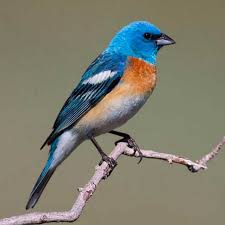
~ Lazuli Bunting: The Lazuli Bunting is a beautiful and well-loved songbird that breeds in the western half of the U.S. and southern Canada. Their migration takes them well into Mexico. The Lazuli is flashy blue with a bit of orange under the chin and a white breast and white check on the wing. The female is more softly colored. Brushy thickets bearing seeds light up with these colorful birds, and they are frequent visitors to gardens and backyard feeders. Be careful not to confuse the bright blue Lazuli Bunting with the Mountain Bluebird which is easy to do. Makes birding fun!
INDIGO BUNTING:
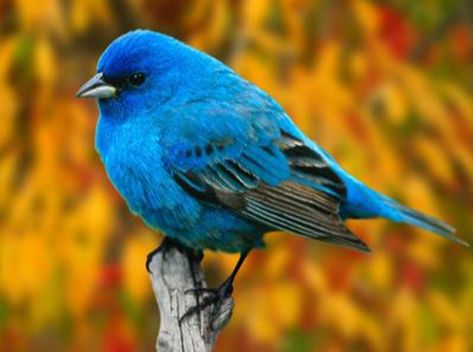
~ Indigo Bunting: Yes, this small Bunting is a beautiful indigo blue, and the female is a light stripy tan. Their range covers more than half of the U.S. from the Rocky Mountains to the eastern shores, and from southern Canada to Mexico and Central America. The Indigo bunting is common and easy to see and hear, but their small size and indigo color make them hard to recognize as they perch on wires or branches against the sky. For birders, it’s the familiar “fire, fire, where, where, here, here” call that alerts us to their presence. Many people are unaware of these beauties, but the Indigo Bunting is truly a North American favorite Bunting.
PAINTED BUNTING:
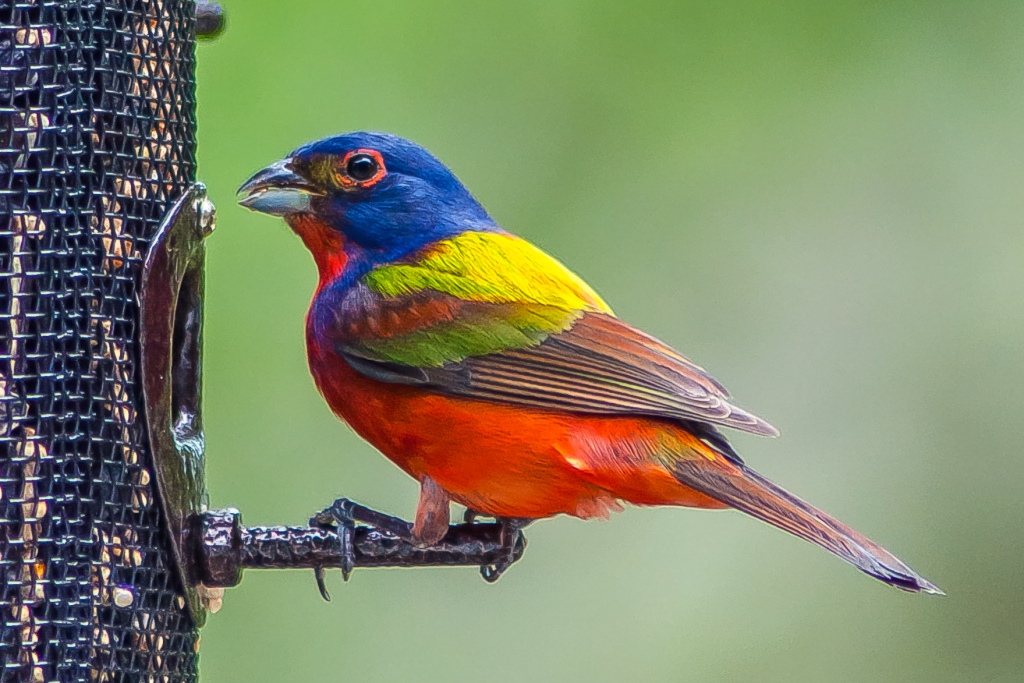
~ Painted Bunting: There is simply nothing like the Painted Bunting. This stocky finch-like songbird is extravagantly colorful. His blue head, green back, red rump, and red belly makes him an unmistakable and unforgettable visitor to your feeders. The female has her own beauty with an over-all bright yellow-green coloring. Painted buntings breed from Texas and Oklahoma and east through Florida and South Carolina. Migration takes them through Mexico and Central America. They migrate in flocks with other birds. These Buntings are primarily seed eaters and are commonly found low in the trees bordering open grassy areas, or hedgerow and brushy areas. If you don’t have the Painted Bunting in your area, then you must put this bird on your list to see if traveling south. The Painted Bunting is a one of a kind, and definitely a North American all-time favorite Bunting.
Although there are five more Buntings that are found in the U.S. they are seldom seen. Some have territories that barely border the U.S., and some are found only on Alaskan islands in diminishing numbers. There are even a few Asian buntings that wind up on our shores. For me, however, the Snow Bunting, the Lazuli, Indigo, and Painted Buntings are the best. The Bunting ain’t no eagle. They are small, beautiful, and just as proud. Better get the binoculars! Happy birding!

